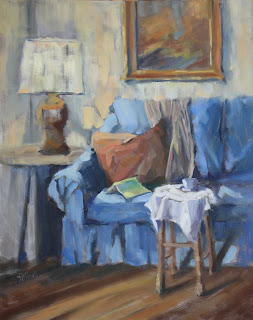12 x 12
Over the winter I worked on a number of still life paintings. When I felt myself growing too "tight" with a particular painting, I would chose a more whimsical subject for the next one. Using subject matter that was not too serious was meant to prompt me to lighten up my attitude and to loosen up with the paint application. I had great fun with a series of stuffed animals. With Easter approaching, I thought it would be timely to share these bunny rabbits. Happy Easter to all!
"Peter Cottontail"
SOLD




.jpg)




